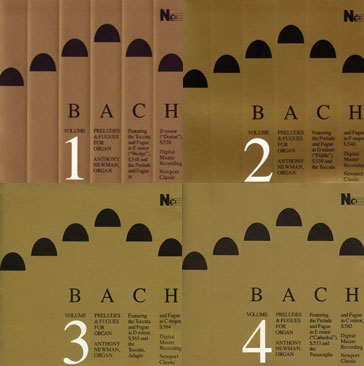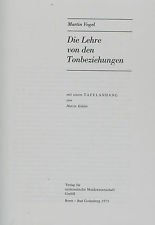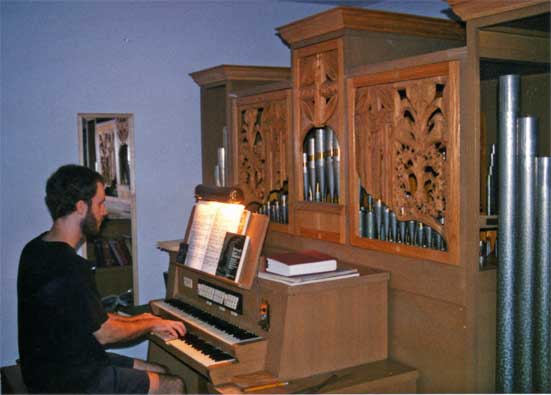



July 09, 2016
June 6, 2016 marked the official 10-year anniversary of H-Pi Instruments as a legally registered business in the United States. I allowed this day to pass without mention because I was too busy with other things, but clearly there is cause for celebration, and reasonable grounds for personal reflection. I'll try not to be too overly effusive as I continue telling the story of how the Tonal Plexus came to be. I'll share some of the decisive aspects of my past which lead me towards a focus on keyboard instruments and how they are tuned.

The late 80's in the U.S.A. were the days of cheap cassettes in discount "cut-out" bins. My friends and I would go to the record store in the mall and buy random things we had never heard of. It was a gamble that sometimes led to great discoveries. One day I found a curious looking cassette by someone named Leo Kottke — an album titled "6 & 12-String Guitar", that had an armadillo on the cover. It became one of my favorite records. At some point, my older sister Janis bought a new guitar and gave her old one to me. She taught me how to tune it, how to play a few standard chords and some basic fingerpicking patterns, and off I went figuring out how to play songs and making up my own music. I noticed that the music on the Leo Kottke record sounded different, and I figured out that this was because he was tuning the strings differently for almost every song. Neat idea, and it sounded great. So I started doing the same thing, making up tunings and fingering patterns. I didn't write that music down, since it didn't seem necessary and I had only a vague idea about music theory anyway. Everything was recorded to cassette.

In 1990, I began as an undergraduate music major in percussion performance at Eastern Illinois University. After the first year, I decided to change my major to music composition — a better fit for me. I had almost no background on keyboard instruments, but I convinced the faculty that I would work hard and thus was able to take private lessons in piano. After a year of piano lessons, I discovered an amazing series of CDs of Bach's organ music by Anthony Newman, and I decided to switch from the piano to the pipe organ. The small practice organ at EIU had exposed capped pipes which often slipped slightly out of tune, and I fixed the tuning of pipes that would slip from one practice session to the next.
In an effort to understand all the instruments well enough to write for them, I also studied violin, switched to viola, and played viola in the student orchestra. In addition to continuing my studies in percussion throughout those four years, I also took a semester of lessons on the horn. Classes in psychology, physics, astronomy, philosophy, and a seminar on cold war politics also held my attention.
One time when I was writing music, something strange happened, the significance of which I didn't realize until almost a decade later. I was sitting in a practice room, writing a quartet for flute, oboe, clarinet, and bassoon. I heard some music in my head, and I put pencil to paper. The passage was one beat of music in 3/4 time. I wrote the bassoon part, and the clarinet part. The oboe was silent. Next came the flute. In my mind I clearly heard a descending chromatic line spanning a minor third from F to D, consisting of four 16th notes and a downbeat. When I attempted to transcribe this from my mind to the paper, it wasn't possible. I looked down at the piano, and plunked out the keys from F down to D: F, E, E-Flat … D. The notes sounded wrong. The E was too low. The E-flat was too low. And where was the other note? It wasn't there at all. Three of the pitches I wanted the flute to play which I clearly heard in my head, weren't on the piano. And, I knew if they weren't on the piano, that meant they also weren't on the flute. I was young, a student, very hard on myself whenever I made errors — a perfectionist. I thought to myself, "Wow, that is embarrassing. You really need to work on your ear training." I never mentioned this episode to any of my teachers. I simply resolved to work harder to train my ears to hear only the twelve chromatic tones, since that was one of the obvious goals of my training as a composer. In one sense it was right to concede that in order to work within a system, one has to train one's ears to hear the pitches that are available in that system. But it's a bit tragic, in retrospect. How many others have destroyed the integrity of their ideas in order to conform to a system that they barely understand?
As a masters student at the Conservatory at the University of Cincinnati, I focused on studies in Bach-style counterpoint, and my thesis was about canonic melodic inversion. I continued lessons on the pipe organ, and my teacher David Mulbury (who had studied in Germany with Helmut Walcha) allowed me to focus on the music in which I was interested, which was the music of J.S. Bach (though I also studied Buxtehude, Walther, and others). My interest in organ music and the pipe organ itself deepened during that time, and I started reading about the history of pipe organs and how the instruments are built.

It was through my research of counterpoint texts for the written part of my thesis that I ran across a book by a German musicologist named Martin Vogel, called On the Relations of Tone. This book was like nothing else I had ever seen. At the time I didn't read it thoroughly, as I was focusing on my thesis, but I read bits and pieces when taking breaks. I didn't understand much of what I read, but I started feeling some serious questions brewing. Why, exactly, was the keyboard the way that it was? Why was our notation system the way it was? Why was our Western system of music theory the way that it was, and not some other way? When I brought these things up with my teachers, it seemed that none of them could give me a straight answer.
Shortly before graduation, a piece I had written for pipe organ won the American Guild of Organists composition competition. Of course this added to my enthusiasm for the pipe organ. I then learned that the Conservatory was in the process of constructing a new building on campus, and was planning to tear down the existing building that housed the practice organs. While some of the larger instruments would be moved to the new building, others would be left in the old building and torn down with it. One of the smaller instruments that I enjoyed practicing on was a 4-rank Möller organ, and this instrument was one of those tagged for demolition. I had a little bit of money in the bank, and I got the idea to make an offer to buy the instrument from the school. My offer was accepted, and for a pittance I became the proud owner of a small pipe organ.

Feeling inspired, I dug further into the books I had checked out on organ building to try to better understand the instrument I had just bought. It was clear to me that nothing else in music compared to the grandeur of the pipe organ — the magnificence of the instruments themselves, and the sounds they are capable of producing. This combination of art and science spoke to me directly, inspiring both awe and devotion. I decided this was a good direction for me; that is, not only to write music for this instrument, and to play the music that I loved on this instrument, but also some day to design and build these fantastic instruments.
What was to happen after completing my masters degree was at that time unclear. I applied and interviewed for the doctoral program at the Conservatory, and was rejected. Searching for direction, I learned that there was a job opening at an organ building firm called Goulding & Wood, in my home town of Indianapolis. This seemed an obvious path to take. As part of my interview, I was given a tool I was told was a "tuning knife", and was asked to climb into an organ chamber and fix a pipe that was out of tune. It was very easy for me to do that. They needed an organ tuner. I was hired on the spot.
Friends helped me dismantle the Möller organ in Cincinnati and move it to a second-floor apartment in Indianapolis. During the next year at Goulding and Wood, in addition to some woodworking and electrical work in the shop, my primary duty was to tune organ pipes. I traveled around the midwest, working on a wide variety of instruments. Needless to say, during that time I learned first-hand a great deal about tuning.
At this point I'll take a break, since I've covered about a decade (roughly from '87 to '97). I'll pick up the story here next time.
Best Regards,
Aaron
[ Showing 1 entry | Next entry | Show all entries ]